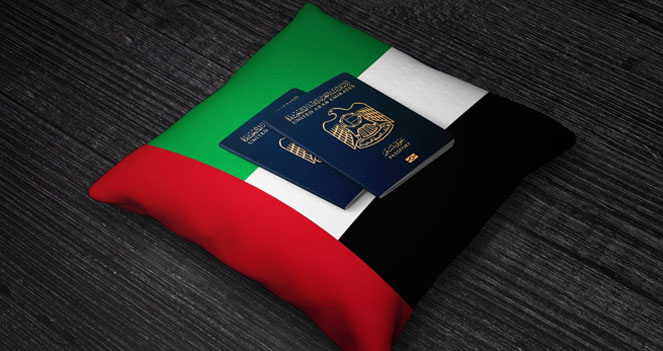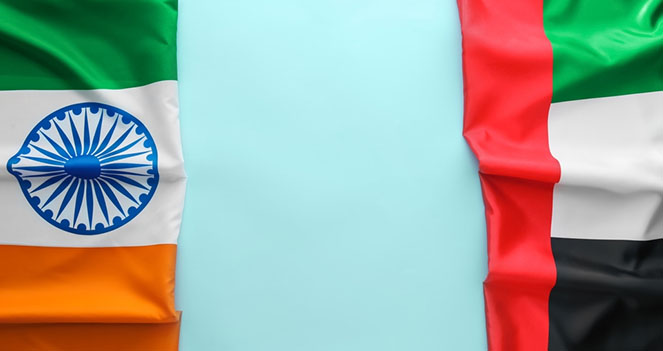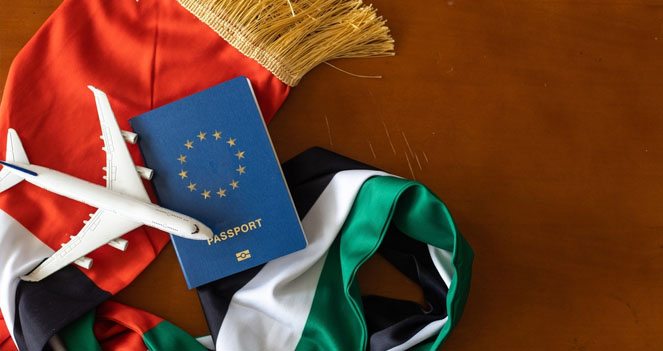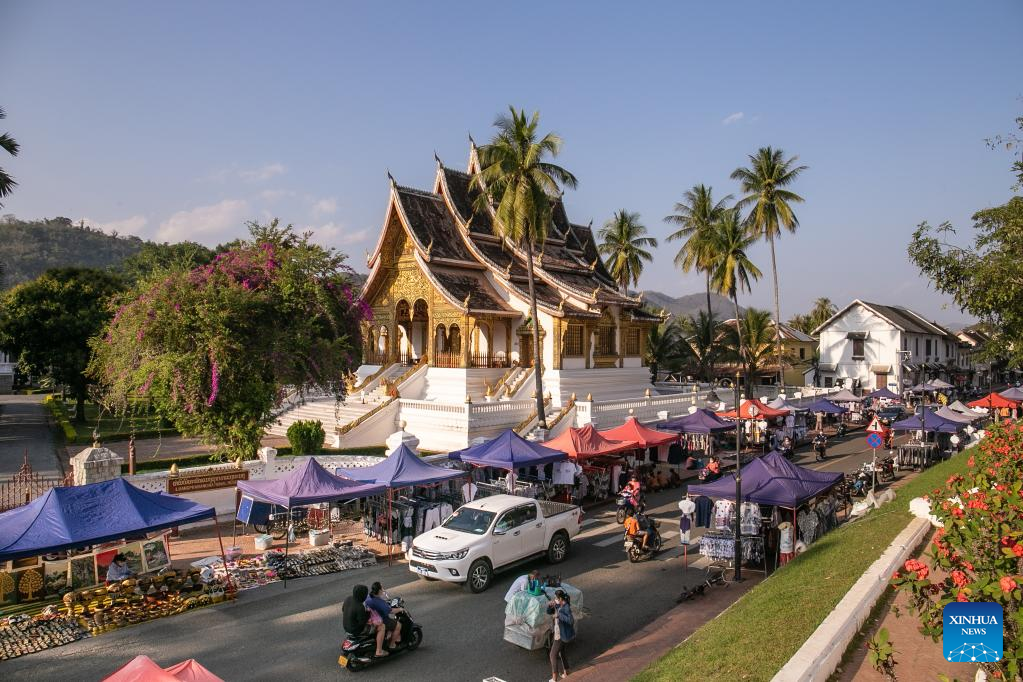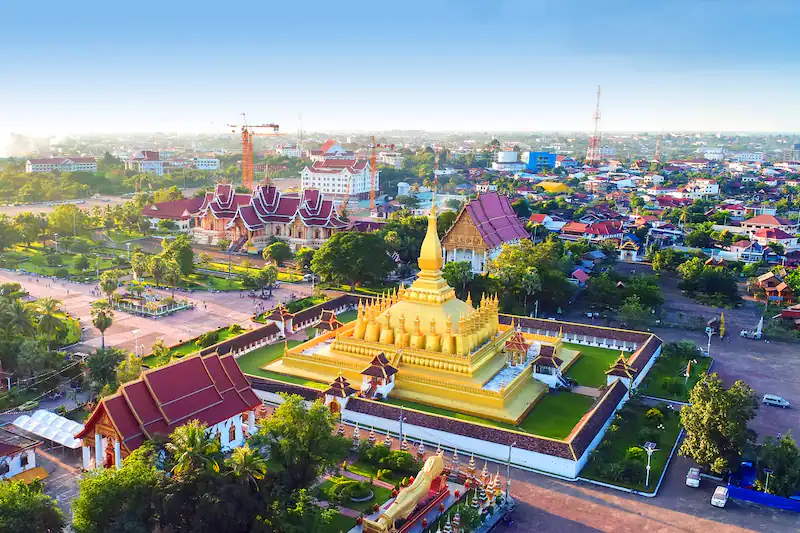
Laos is a landlocked nation in northeastern Central Southeast Asia. It comprises a narrow, peninsula-like section extending to the southeast from an irregularly shaped northern component. The nation's length from northwest to southeast is around 650 miles (1,050 km). The nation's capital, Vientiane (Lao: Viangchan), is situated in the northern part of the country along the Mekong River.
With its forested highlands, upland plateaus, and lowland plains, Laos' geologically diverse geography supports an equally diversified people that are mostly brought together through agriculture, particularly rice-growing. Between the 5th and the middle of the 19th century, interactions with the neighbouring Khmer (Cambodian), Siamese (Thai), and Myanmar (Burmese) kingdoms—sometimes hostile, sometimes amicable—indirectly brought Indian culture, including the now-practised religion of Buddhism, to Laos.
The visual, performing, and Buddhist and Hindu traditions have influenced literary arts in the nation. However, many indigenous and minority populations of the isolated highland slopes and hilly areas have preserved their own ceremonial and artistic practices. China borders Laos to the north, Vietnam to the northeast and east, Cambodia to the south, Thailand to the west, and Myanmar to the northwest (Burma).
Laos' harsh, forested mountains, which reach a maximum elevation of 9,245 feet (2,818 metres) above sea level at Mount Bia in the north and are a major obstacle to travel everywhere, dominate the country's terrain. The main range is a component of the Annamese Cordillera and runs along a northwest-southeast axis.
The Plain of Jars, also known as Thông Haihin, is a communications hub located on the Xiangkhoang Plateau in north-central Laos. Its name comes from the vast prehistoric stone jars that were discovered there.


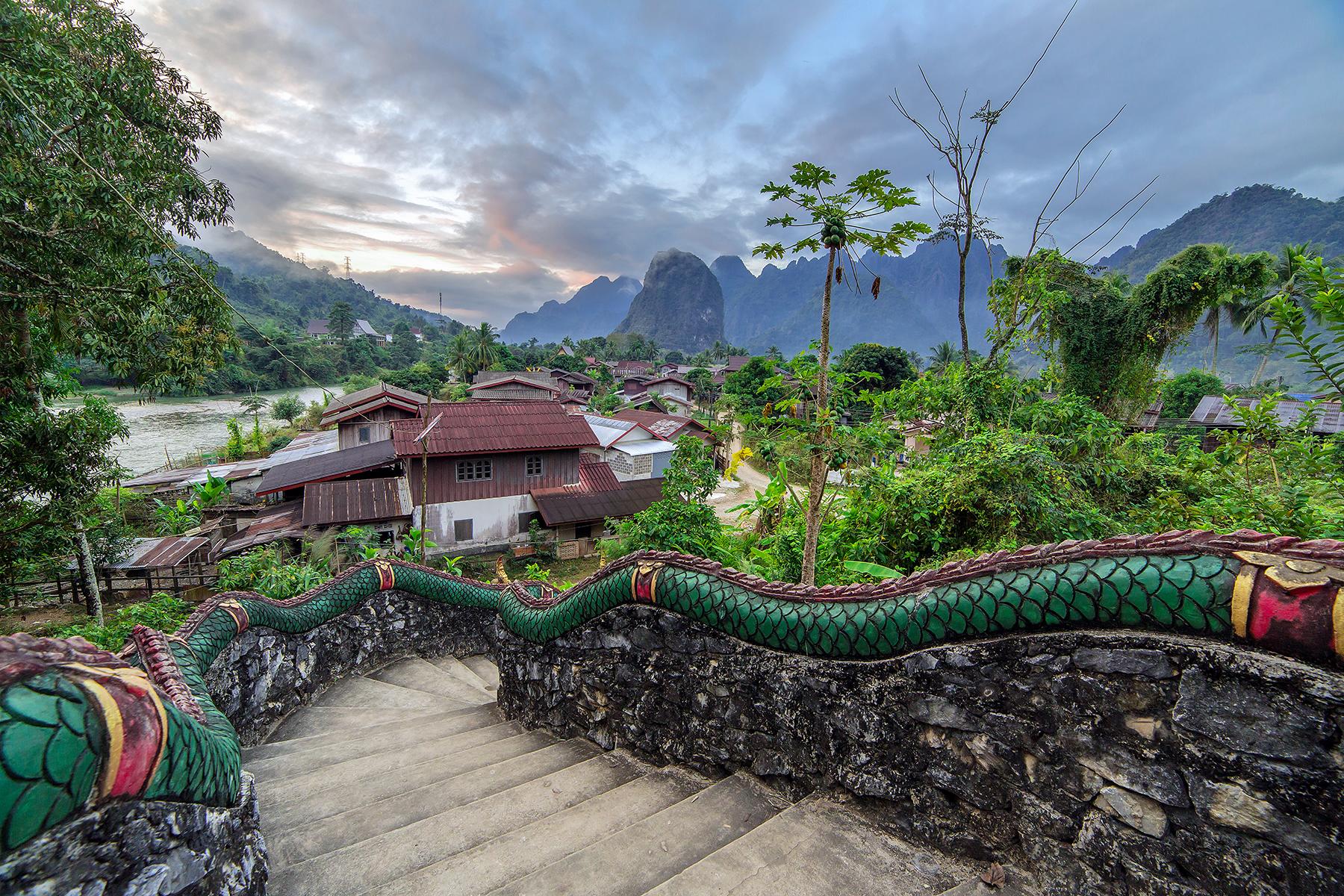
 Dubai
Dubai  Qatar
Qatar  Kuwait
Kuwait Oman
Oman Yemen
Yemen Saudi Arabia
Saudi Arabia  Bahrain
Bahrain Egypt
Egypt Turkey
Turkey Romania
Romania  Russia
Russia Ukraine
Ukraine Schengen
Schengen  United Kingdom
United Kingdom  Canada
Canada USA
USA Singapore
Singapore Malaysia
Malaysia  Japan
Japan Thailand
Thailand  Mexico
Mexico Hong Kong
Hong Kong  Philipines
Philipines Vietnam
Vietnam Armenia
Armenia kazakhstan
kazakhstan  Australia
Australia New Zealand
New Zealand South Korea
South Korea South Africa
South Africa Uganda
Uganda Ghana
Ghana Kenya
Kenya Sudan
Sudan Morocco
Morocco Israel
Israel Syria
Syria Lebanon
Lebanon  Iran
Iran Iraq
Iraq Azerbaijan
Azerbaijan  Austria
Austria  Belgium
Belgium The czech republic
The czech republic Denmark
Denmark Estonia
Estonia Finland
Finland France
France Germany
Germany Greece
Greece Hungary
Hungary  Iceland
Iceland Italy
Italy Latvia
Latvia Liechtenstein
Liechtenstein Lithuania
Lithuania Luxembourg
Luxembourg Malta
Malta the Netherlands
the Netherlands Norway
Norway Poland
Poland Portugal
Portugal Slovakia
Slovakia Slovenia
Slovenia Spain
Spain Sweden
Sweden Switzerland
Switzerland Afghanistan
Afghanistan Albania
Albania  Algeria
Algeria 
